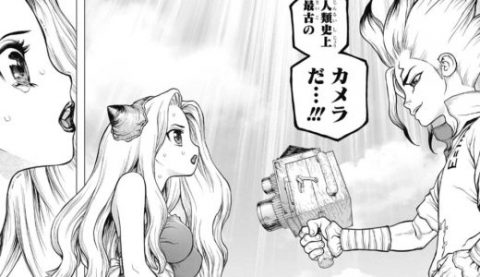"Golden Kamuy" began serialization in Weekly Young Jump in 2014. The story begins in Sakhalin after the end of the Russo-Japanese War, towards the end of the Meiji period. The greatest appeal of this manga is the way Ainu culture and traditions are scattered throughout the story. In this article, we will introduce some of the Ainu culture and legends that appear in Golden Kamuy.
The Beginning of the Golden Kamuy Story

Source: Golden Kamuy ©Noda Satoru/Shueisha, Golden Kamuy Production Committee
The story of Golden Kamuy begins as follows: After the end of the Russo-Japanese War, the immortal Sugimoto, a former soldier, arrives in Hokkaido hoping to strike it rich by mining gold. By chance, he hears a story about a hidden Ainu gold nugget from an old man. The man threatens to assassinate him, claiming he's talked too much. After skillfully defeating him, Sugimoto begins to believe the story seems true and sets out on a quest for it. He then meets an Ainu girl named Asirpa, and the two embark on a quest together. Along the way, Asirpa teaches him about various Ainu cultures and legends.
Why are the tips of Ezo rabbit ears black?
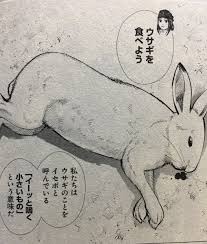
Source: Golden Kamuy © Noda Satoru / Shueisha, Golden Kamuy Production Committee
Sugimoto captures an Ezo rabbit. At that moment, Asirpa explains why Ezo rabbit ears are black. Here's the story: In the past, deer had rabbit-like legs, allowing them to run quickly across the snow. Humans were unable to catch such deer. The rabbit, seeing this, tricks the deer and lets him get his leg back. Realizing he's been tricked, the deer becomes angry and throws a campfire at the rabbit. It hits his ear, turning the tip black. With its new leg, the rabbit can now move quickly through the snow, but its black ear stands out in the snow, making it easier for humans to find it. This is a lesson from the Ainu people: nothing good will come from being greedy.
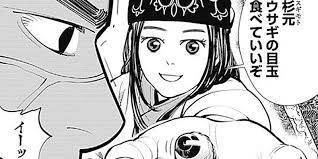
Source: Golden Kamuy ©Noda Satoru/Shueisha, Golden Kamuy Production Committee
By the way, only the man who captures the prey can eat the eyeball. Apparently, it's a great honor.
The Black Fox and the Red Fox
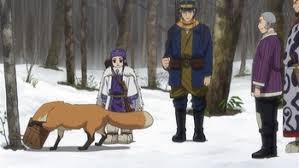
Source: Golden Kamuy © Noda Satoru / Shueisha, Golden Kamuy Production Committee
The group captures a red fox in a trap. Then, Asirpa tells them a secret: a kappa has come from the end of the world to challenge a marten to a strength contest. The kappa ambushes the marten, throwing it into the fire and burning it. However, because the marten was a great god, she suddenly reappeared from outside and threw the kappa into the fire. As the ashes of the burned kappa turned black and red, a black fox and a red fox were created. This is a lesson that cheating is not allowed in competitions. Incidentally, black foxes were worshipped as "fox gods of the mountains," while red foxes were hated as "deceptive foxes." During this period, black fox fur was considered a luxury item, and it is said that the Wa people farmed foxes in Hokkaido. However, due to the rise of imports and synthetic fibers, fox farming disappeared.
Real Food: Shipe
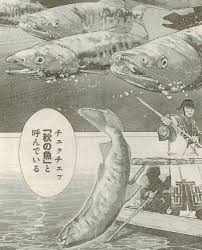
Source: Golden Kamuy © Noda Satoru / Shueisha, Golden Kamuy Production Committee
This word refers to salmon, the Ainu's staple food. It was also called Kamuycheb, "God's Fish," or Chukchep, "Autumn Fish." It was so important to the Ainu that some people starved to death in years when salmon were extremely scarce. The skin was used to make shoes, and every last bit of it was used for food and daily life. This scene strongly embodied the Ainu's fundamental belief that we should coexist with nature and that kamuy (gods) reside everywhere, including plants and animals.
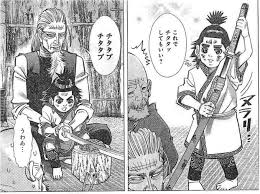
Source: Golden Kamuy © Noda Satoru / Shueisha, Golden Kamuy Production Committee
By the way, the one made with salmon is apparently called true chitatap (seared meat or fish).
The Powerful Kamuy Etahcipe
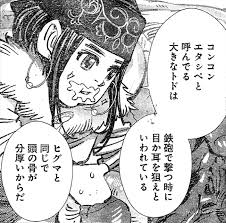
Source: Golden Kamuy © Satoru Noda / Shueisha, Golden Kamuy Production Committee
The Ainu believe that all things have souls, and they worship those that bring many blessings, possess great power, and are beyond human control as kamuy. Etahcipe (the Sea Lion) was one of them. Apparently, large sea lions have skulls so thick that they can survive a gunshot. The oil was considered a delicacy, and the skin was cut into string and used as rope, so nothing was wasted. Brown bears were also considered kamuy, and as both sea lions and brown bears are strong kamuy, there are many legends of them fighting. While sea lions and brown bears are revered as kamuy in themselves, the Ainu believe that salmon and deer are not kamuy in themselves, but are spread by kamuy in the rivers and on the land.
Earrings and Wild Grape Vines (Hah)
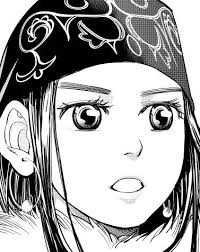
Source: Golden Kamuy © Noda Satoru / Shueisha, Golden Kamuy Production Committee
Kamui are said to wear wild grape vines as earrings. That's why Asirpa follows suit and wears similar earrings. When they pierced their ears as children, they would insert wild grape vines to keep the holes from closing. Imitating the appearance of the kamuy is also a manifestation of the Ainu's respect for them. Incidentally, it seems that eating too many wild grape berries can cause your tongue to hurt. Also, Asirpa's shoes are made from wild grape vines.
Summary
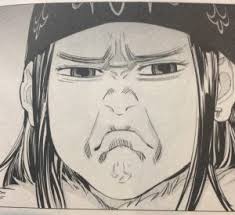
Source: Golden Kamuy © Noda Satoru / Shueisha, Golden Kamuy Production Committee
From a historical perspective, the Ainu people met a very tragic end. However, their pure lifestyle, culture, and traditions are still being steadily passed down in parts of Hokkaido. As we learn about this culture and the history of Hokkaido, we can't take our eyes off Golden Kamuy, as Asirpa will continue to teach us about the Ainu.



